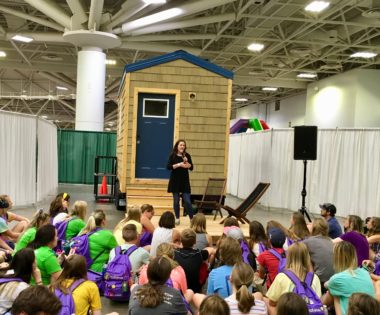Gabrielle Clowdus has a mega plan for addressing homelessness: “micro enterprises”
Gabrielle Clowdus was a PhD student at the U of M studying global poverty when she was struck by the housing disparities in her own Twin Cities community. “I had never really looked at poverty in my own backyard,” she says. “There is this blind stereotype that if you were in the US, you were being taken care of. But we know that’s not true.”
She began researching how the effects of homelessness and unstable housing were showing up in hospital emergency rooms across the country. She had conversations with doctors and nurses and healthcare advocates around ending the revolving door of emergency care: Can housing be something that is prescribed for good health, in the same way a doctor can prescribe an inhaler for asthma? What if we could prescribe housing, almost as the first remedy, for all things that ail people?
And she started to take her research even further, looking at how models of Housing First versus Community First reduced homelessness and the serious health issues associated with it. “Unlike Housing First, Community First is relational. It gets to that deepest core desire: To live in a community where we are seen and valued. Where we have purpose. It’s about people living in a community next door to people who want to live there, too.” In other words, housing is about more than shelter; it’s about supporting a sense of purpose and building meaningful connections.
That idea drove Gabrielle and a team of design students, architects, builders, volunteers, church leaders, and thinkers and doers to develop a plan for tiny homes or “micro enterprises” that could be erected on land owned and operated by faith organizations. “They can do something the market can’t do, that developers can’t do”, Gabrielle says. “It’s an opportunity to carry out their mission in real ways.”
Erecting tiny homes on religious land is a huge cost-saving solution that Gabrielle says could result not only in more homes being built, but homes that already have community readily built in. The group has finalized the first $25,000 prototype, which they plan to use as a model for developing more homes on religious land throughout the Twin Cities over the next few years. “Churches have a lot of resources in their staff, and in their land and building. They can be trained in resident care and other pieces,” Gabrielle says. “They can really tap into people power. We can fundraise for this and we don’t have to compete for public dollars. And we can take the prototype and those breakthrough moments we have to cities and religious leaders across the country….We can’t not do this. We have to do this. We all do better when everyone is being taken care of.”
